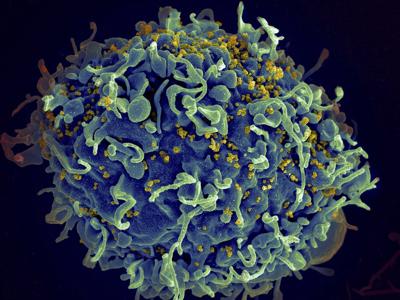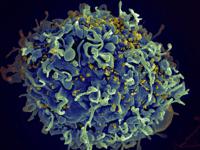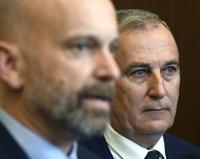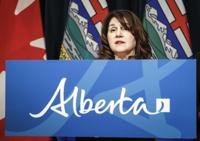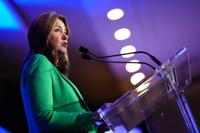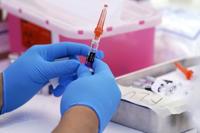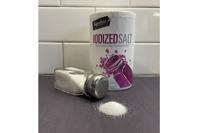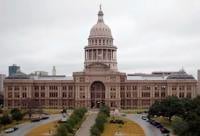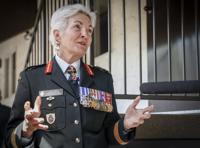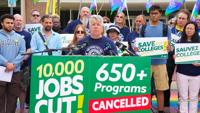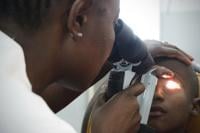LONDON (AP) — Years of American-led investment into AIDS programs has reduced the number of people killed by the disease to the lowest levels seen in more than three decades, and provided life-saving medicines for some of the world’s most vulnerable.
But in the last six months, the sudden withdrawal of U.S. money has caused a “systemic shock,” U.N. officials warned, adding that if the funding isn’t replaced, it could lead to more than 4 million AIDS-related deaths and 6 million more HIV infections by 2029.
“The current wave of funding losses has already destabilized supply chains, led to the closure of health facilities, left thousands of health clinics without staff, set back prevention programs, disrupted HIV testing efforts and forced many community organizations to reduce or halt their HIV activities,” UNAIDS said in a report released Thursday.
UNAIDS also said that it feared other major donors might also scale back their support, reversing decades of progress against AIDS worldwide — and that the strong multilateral cooperation is in jeopardy because of wars, geopolitical shifts and climate change.
The $4 billion that the United States pledged for the global HIV response for 2025 disappeared virtually overnight in January when U.S. President Donald Trump ordered that all foreign aid be suspended and later moved to shutter the
Andrew Hill, an HIV expert at the University of Liverpool who is not connected to the United Nations, said that while Trump is entitled to spend U.S. money as he sees fit, “any responsible government would have given advance warning so countries could plan,” instead of stranding patients in Africa when clinics were closed overnight.
The U.S. President’s Emergency Plan for AIDS Relief, or , was launched in 2003 by U.S. President George W. Bush, the biggest-ever commitment by any country focused on a single disease.
UNAIDS called the program a “lifeline” for countries with high HIV rates, and said that it supported testing for 84.1 million people, treatment for 20.6 million, among other initiatives. According to data from Nigeria, PEPFAR also funded 99.9% of the country’s budget for medicines taken to prevent HIV.
In 2024, there were about 630,000 AIDS-related deaths worldwide, per a UNAIDS estimate — the figure has remained about the same since 2022 after peaking at about 2 million deaths in 2004.
Even before the U.S. funding cuts, progress against curbing HIV was uneven. UNAIDS said that half of all new infections are in sub-Saharan Africa.
Tom Ellman, of the charity Doctors Without Borders, said that while some poorer countries were now moving to fund more of their own HIV programs, it would be impossible to fill the gap left by the U.S.
“There's nothing we can do that will protect these countries from the sudden, vicious withdrawal of support from the U.S.,” said Ellman, director of Doctors Without Borders' South Africa Medical Unit.
Experts also fear another loss: data. The U.S. paid for most HIV surveillance in African countries, including hospital, patient and electronic records, all of which has now abruptly ceased, according to Dr. Chris Beyrer, director of the Global Health Institute at Duke University.
“Without reliable data about how HIV is spreading, it will be incredibly hard to stop it,” he said.
The uncertainty comes as a could end HIV, as studies published last year showed that the drug from pharmaceutical maker Gilead was 100% effective in preventing the virus.
At a launch event Thursday, South Africa's health minister Aaron Motsoaledi said the country would “move mountains and rivers to make sure every adolescent girl who needs it will get it,” saying that the continent's past dependence upon US aid was “scary.”
Last month, the U.S. Food and Drug Administration , called Yeztugo, a move that should have been a “threshold moment” for stopping the AIDS epidemic, said Peter Maybarduk of the advocacy group Public Citizen.
But activists like Maybarduk said Gilead’s pricing will put it out of reach of many countries that need it. Gilead has agreed to sell generic versions of the drug in 120 poor countries with high HIV rates but has , where rates are far lower but increasing.
“We could be ending AIDS," Maybarduk said. "Instead, the U.S. is abandoning the fight.”
___
The Associated Press Health and Science Department receives support from the Howard Hughes Medical Institute’s Department of Science Education and the Robert Wood Johnson Foundation. The AP receives financial support for global health and development coverage in Africa from the Gates Foundation. The AP is solely responsible for all content. Find AP’s for working with philanthropies, a list of supporters and funded coverage areas at .
___
This story has been corrected to show that the name of the drug is Yeztugo, not Sunlenca.

